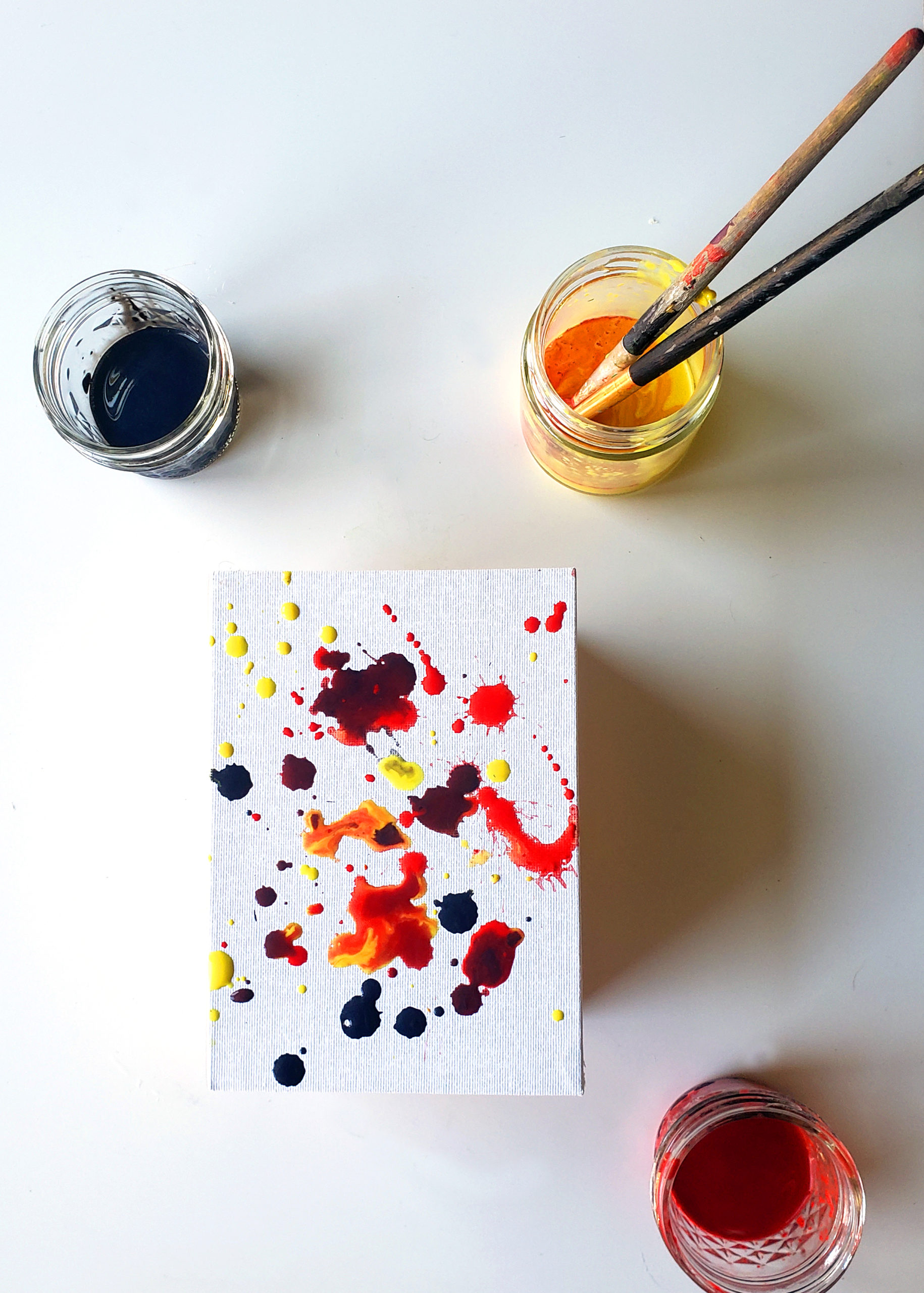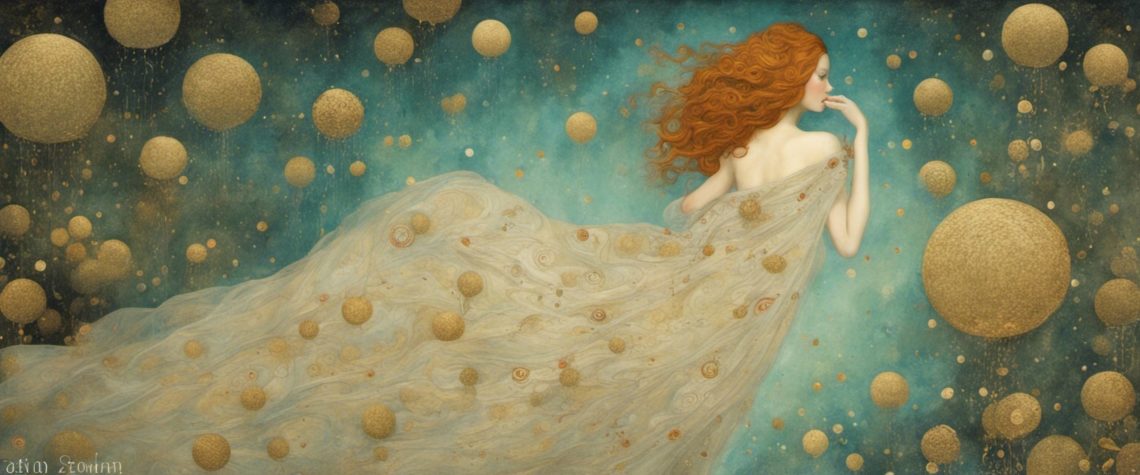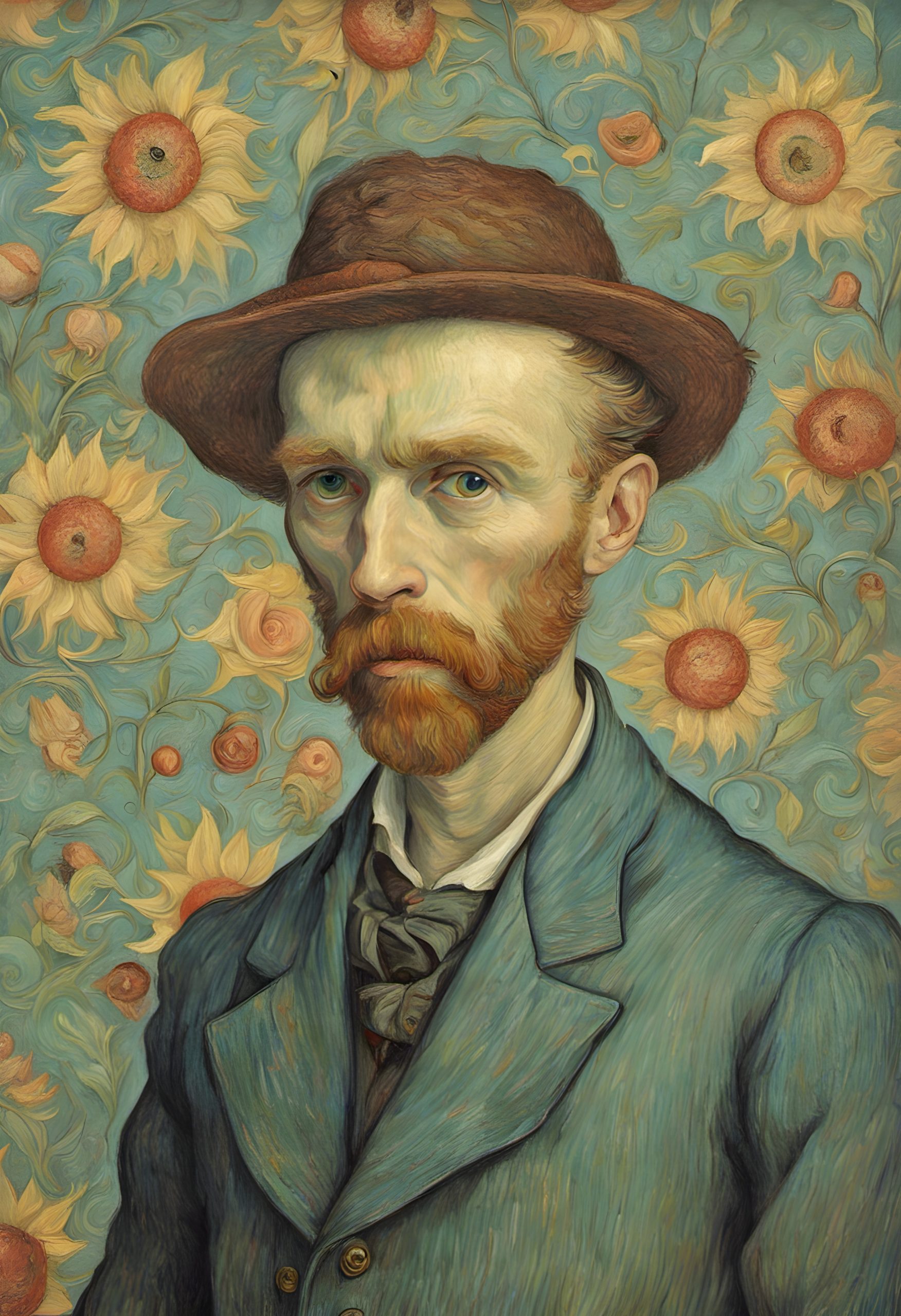This Jackson Pollock art history lesson for elementary students finishes off with an art project so easy, that you can do it with preschoolers.
No joke! It’s one of those rare art projects that appeals to 2-year-olds, 20-year-olds, and everyone in between. Because it’s easy, and because it’s so fun.
Who was Jackson Pollock?
Jackson Pollock painted in a way that looked more like a wild dance than traditional painting.
Born on January 28, 1912, in Cody, Wyoming, he grew up in a family that appreciated art, and his mom was even an artist herself.
When Jackson started painting, he didn’t use brushes like most artists. He used sticks, trowels, and sometimes his own hands. And instead of painting on an easel, he put his canvas on the floor.
Then, he did something really unusual. He dripped, poured, and flung paint onto the canvas in a way that seemed like a colorful explosion.
This way of painting is called “action painting,” and it’s a part of a big art movement called abstract expressionism. (Andy Warhol was also part of this movement).
What’s special about abstract expressionism is that it’s not about painting things that look like real objects, but about painting your emotions and feelings.
One of Jackson Pollock’s most famous artworks is “Autumn Rhythm (Number 30).” When you look at it, you see a swirling mixture of black, white, and gray. It looks like a wild dance of lines and splashes. This painting is like a dance of paint on the canvas, full of energy and excitement.
Jackson Pollock’s art was different from anything people had seen before. He wanted to show that art didn’t have to be about drawing or painting things you could recognize. Instead, he believed art could be a way to express your feelings and thoughts in a unique and personal way.
Pollock’s artwork is like a puzzle. When you look at it, you find your own meaning and feelings within the colors and shapes. It was almost like a secret code of emotions that only you could decipher.
Even though Pollock’s paintings were celebrated, his personal life was filled with difficulties. He struggled with alcohol and had mental health issues. Despite these challenges, he had a loving and supportive partner, Lee Krasner, who was also an artist.
Sadly, Pollock’s life was cut short in a car accident on August 11, 1956, when he was only 44 years old. But his art lived on. His paintings continued to inspire many other artists to be brave, take risks, and express their feelings through art.
Today, Jackson Pollock’s unique style remains a big part of modern art. His “drip paintings” keep on dazzling and inspiring people, even if they don’t always look like something you’d find in the real world. They’re a reminder that art is not just about what you see with your eyes but also about what you feel with your heart. Pollock’s art is like a colorful, energetic, and emotional dance on a canvas that will always be a part of the art world’s history.
Key Vocabulary Words
Abstract Expressionism: The art movement in which Pollock was a major figure, characterized by the spontaneous and emotional application of paint to express inner thoughts and feelings rather than representing recognizable objects.
Action Painting: A technique associated with Pollock’s work, involving the physical and dynamic act of painting, often involving the dripping, pouring, and splattering of paint onto the canvas.
Drip Painting: A painting technique made famous by Pollock, where paint is dripped, poured, or splattered onto the canvas, often creating complex and abstract compositions.
Autumn Rhythm: One of Jackson Pollock’s iconic artworks, known for its energetic and swirling composition, which exemplifies his unique style.
Expressionism: A broad art movement emphasizing the expression of emotions, often through distorted or exaggerated forms and vibrant colors.
Palette Knife: A tool, typically made of metal or plastic, used for mixing or applying paint; Pollock used unconventional tools like palette knives in his work.
Easel: A stand or frame for holding a canvas during the painting process; Pollock often placed his canvas on the floor instead of using an easel.
Canvas: The fabric or surface on which a painting is created, often made of stretched and primed cotton or linen.
Lee Krasner: Pollock’s wife, who was also a prominent artist and played a significant role in supporting his career while pursuing her own artistic endeavors.
Artistic Freedom: The concept of giving artists the liberty to explore and express their ideas and emotions without being restricted by traditional artistic conventions.
Art Movement: A specific style or approach to art that is characterized by shared characteristics, goals, and philosophies; Abstract Expressionism is an example of an art movement.
Artistic Legacy: The long-lasting influence and impact of an artist’s work on subsequent generations of artists and the art world.
Recommended Reading

I love all of Fausto Gilberti’s art history books. (I use his series in my Yayoi Kusama lesson, too!)
(affiliate link —>)Jackson Pollock Splashed Paint & He Wasn’t Sorry is one of my favorites!
The edgy, simplistic, yet bright and engaging illustrations are both sophisticated and fun for kids.
Jackson Pollock Art Project (All Age Groups!)

Materials
*canvases (or art paper)
*acrylic paint
*paintbrushes
*water (to thin paint)
Step 1
Have kids select acrylic paint colors. It helps to have them choose either cool colors or warm colors. (Otherwise, it may end up a big brown mess).
Step 2
Thin the paint with water until it drips easily from the end of a paintbrush. You want a fluid consistency slightly thicker than water.
Step 3
Let ’em go to it.
Invite them to drip the paint, fling it, slap it. (As you may have figured out, this is way easier to deal with outside).
And that’s it.
You’ll end up with a bunch of canvases that are MOMA-worthy.


I have a painting I believe to be a Jackson Pollard, but I cannot seem to see the signature, did all of his art have signature?
The painting was purchased in NYC in the early 1950’s by my parents.
They had apartment in Sutton Place and Jimmy Mont did the living room furnishing, maybe he furnished the artwork.
I would appreciate any help that you could do.
Hi Geoffrey< Art authentification, especially for such a potentially valuable painting, is an extremely precise, highly specialized skillset. Your best bet is to seek out an expert at a museum that specializes in Abstract Expressionism and seek their advice.